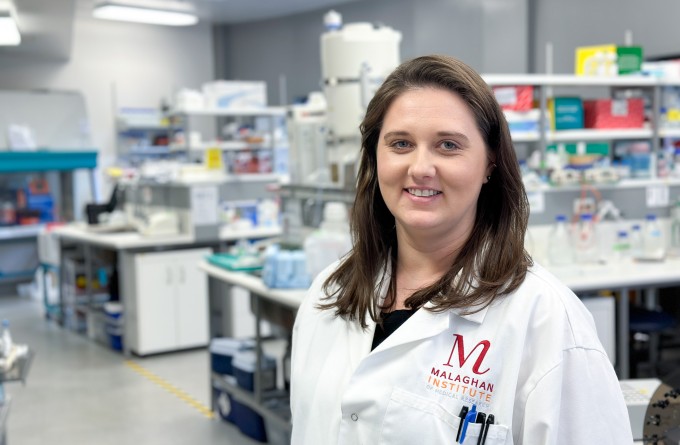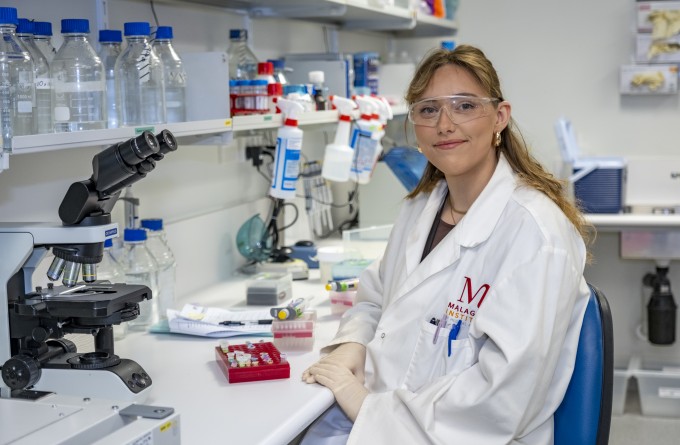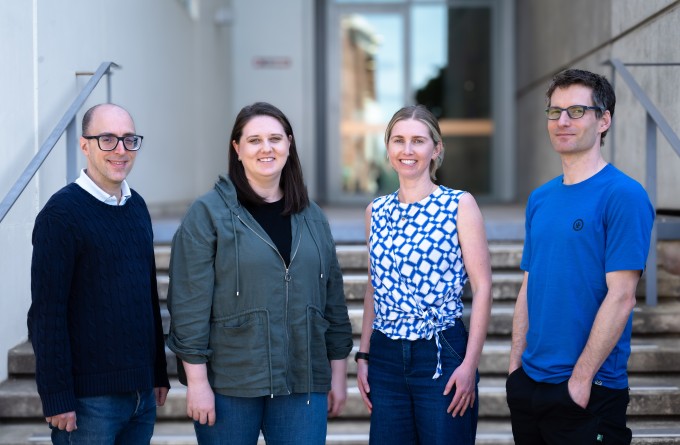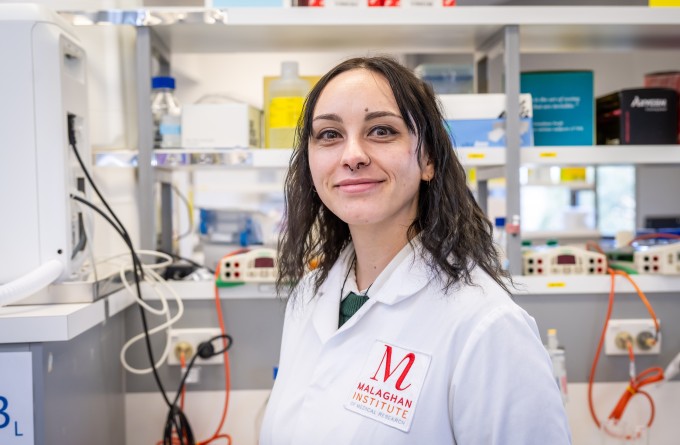27 June 2025
Louise Cameron is a master’s student exploring how subtle differences in immune cells may explain why some mistakenly classify harmless molecules as a threat. Her work is helping to unravel how these misunderstandings contribute to the development of allergic disease in the skin and the lung.
We’ve all had that experience of hearing a piece of information so alarming, we can’t help but feel it’s our moral imperative to spread the word. We open our messaging apps and scroll down our list of contacts so we can alert our friends, family, colleagues and the odd person you met that one time. We can’t help but feel a sense of righteous validation as our contacts react, in turn, sharing on their socials and spreading the news far and wide.
However, imagine you later realise, with abject indignation, it was a piece of fake news. But it’s too late, the ship has already sailed. Minds have been staunchly made. Some proactive individuals have even been stirred into action. There’s no taking back that spread of false information that seemed so convincing and urgent initially.
It so happens that our immune system has its own form of misinformation that can have incredibly dire and long-term consequences. The outcome of this misinformation is better known as an allergy.
At the very start of this chain of immune misinformation is the dendritic cell. These immune cells orchestrate mass communication across the different arms of the immune system.
“Dendritic cells constantly patrol our body, monitoring for any signs of a dangerous intruder, such as an invading virus, bacteria or parasite,” says Louise, who is part of Dr Olivier Lamiable’s Team in the Ronchese lab.
“If the dendritic cell encounters a fragment of something that’s threatening to the body, it raises the alarm bells, alerting other immune cells to produce an appropriate protective response.”
However, in some cases, the dendritic cells encounter a benign substance such as fragments of dust mite or peanuts and misinterprets it as a serious threat to health. If activated, the dendritic cell is compelled to spread the word about this incorrectly identified threat.
The dendritic cell makes its way to the lymph nodes, immune hubs where young, naïve immune cells are prepped for defence.
“These immune cells, called naïve T-cells, are waiting for information on potential threats so they can specialise and mount a targeted, long-term protective response,” says Louise.
The dendritic cell passes on its message to these naïve T-cells, complete with details of how to identify the perceived threat if encountered again. These cells mature into Th2 cells, which play a key role in coordinating the allergic response by releasing cytokines, powerful molecules that promote inflammation.
Other naïve T-cells become T follicular helper cells, which spread the news further, recruiting other types of immune cells to the mission. They activate B-cells, which produce specific IgE antibodies which exacerbate the allergic response.
Despite the initial substance being falsely identified as a threat, the body is now primed to respond to the benign substance, whether that is dust mites, pollen or peanuts. This response can range in severity and localisation within the body, manifesting as an asthma attack, eczema or even anaphylaxis. An allergy can often last for a person’s whole lifetime.
“My research is looking into dendritic cells, the primary cell that initiates the process of allergy development. I’m trying to understand if there is variation between dendritic cells that trigger allergic responses and those that don’t.”
Understanding the characteristics that distinguish dendritic cells that are prone to misinterpreting signals and spreading misinformation in the immune system could help guide treatment strategies that specifically inhibit these immune cells, hence preventing allergic reactions before they start.
Louise is also looking to understand the differences between dendritic cells in the skin and the lungs. This could reveal the specific triggers and signals in each environment.
“We know from previous research that there is some variability between allergic mechanisms originating in the skin compared to the lungs and this may be because of variations in the dendritic cell localised within each type of tissue.”
The development of allergic reactions is clearly a very complex process, Louise’s research is helping to answer some fundamental questions that could uncover foundational processes that trigger the allergic response.
Growing up in Karori, Wellington, Louise’s interest in science was shaped early on by her father, a marine ecologist whose work took him to places like Fiji and Pakistan. He would return to Wellington with exciting stories from the field that sparked her imagination and encouraged her excitement about science, always urging her to stay curious and ask questions, big and small.
Attending Wellington Girls’ College, she continued to nurture that curiosity, deciding to undertake a BSc in Pharmacology at the University of Otago – Ōtākou Whakaihu Waka.
She initially joined the Malaghan Institute as a summer student in December 2024 where she was able to apply the concepts she learned in her degree.
“Some lab techniques, like flow cytometry, were only briefly covered in lectures before I joined the institute. However, the strong support network at the Malaghan has made the transition into learning these methods much more approachable.
Louise is conducting this research as part of her MSc in Biotechnology at Te Herenga Waka – Victoria University of Wellington. Her research is made possible by generous donations from our supporters.
“I would like to say a massive thank you to our donors. Being a student can be financially challenging, especially with the high cost of living here in Wellington. Thanks to their generous support, I can fully immerse myself in my studies and the pursuit of new scientific skills, without the need to divide my attention between part-time work and my research.”
Related articles

Dr Kerry Hilligan awarded Sir Charles Hercus Health Research Fellowship
2 December 2025

Tracking the journey of the shapeshifting bacteria behind stomach cancer
19 November 2025

Marsden funding to drive discovery and innovation in cancer, allergy and infectious disease research
5 November 2025

How our immune system tackles fungal foes
23 October 2025

Malaghan alumni series: Professor Paige Lacy
14 October 2025

Blood, sweat and cells: The making of New Zealand’s first CAR T-cell trial
24 September 2025
